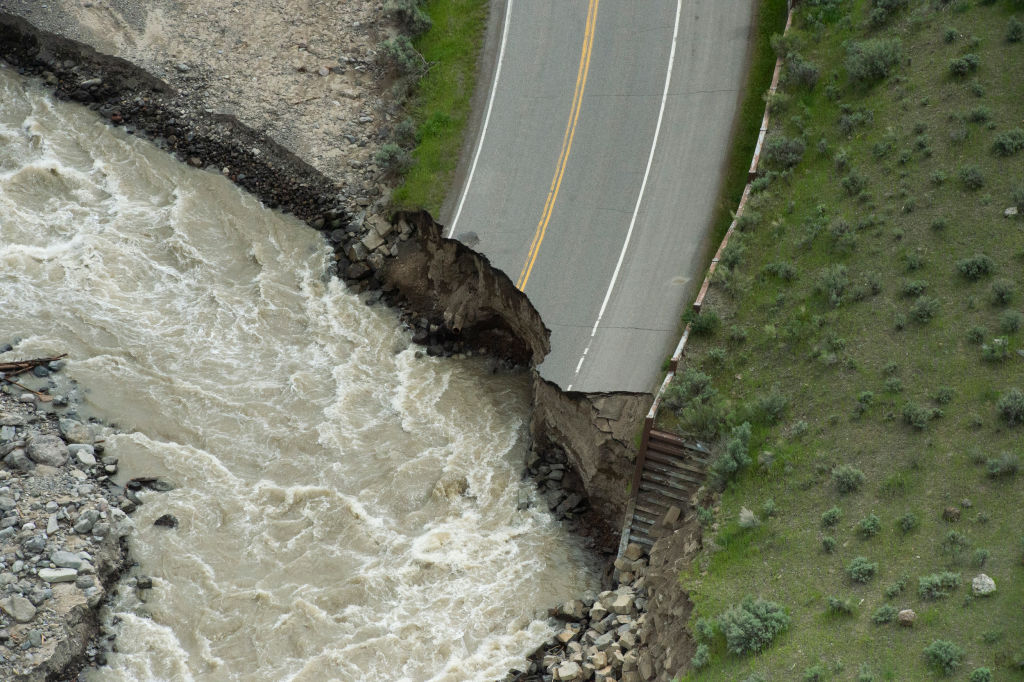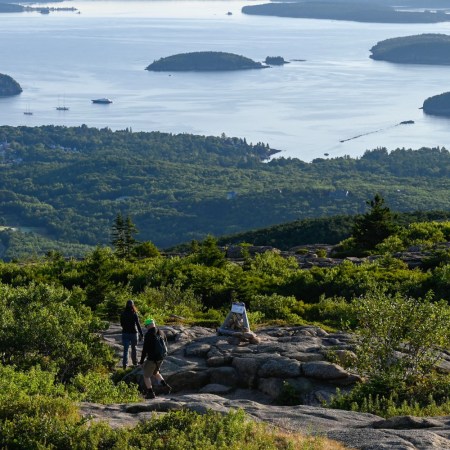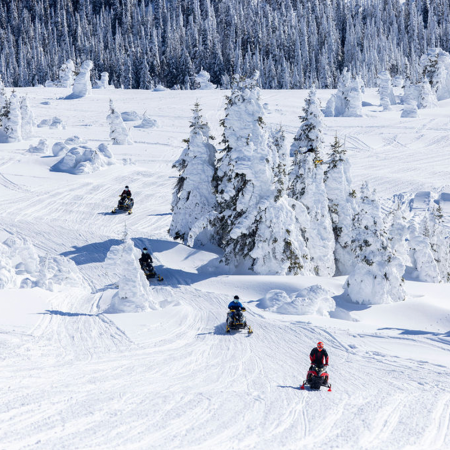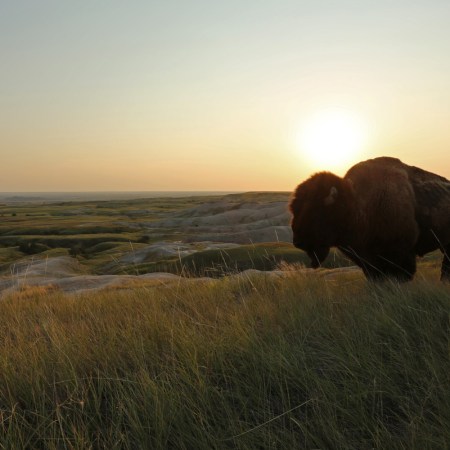Earlier this month, catastrophic flooding d destroyed some of the roads leading into Yellowstone National Park, prompting the park to temporarily close. According to a new report in the New York Times, visitors will be able to access parts of the park later this week. The article notes that 80 percent of the park should be re-opened within two weeks, after $50 million worth of cleanup takes place.
When it comes to the most damaged areas of the park, it remains unclear when visitors will be able to return there.
The flooding — and the damage it caused — came just as the number of visitors were increasing due to warmer weather. An article by Nick Mott in The Atlantic offers a firsthand account of what the flooding was like. “Federal data show the volume of water rushing through the river had reached about 32,000 [cubic feet per second] just three times over the past 130 years,” Mott wrote. “But the flow on Monday nearly doubled the previous record.”
And while this event was supposed to be a once-in-a-millennia occurrence, the changing climate has inspired skepticism on that front.
Besides the environmental effects, the flooding has also had an adverse one on the local economy. As a recent article in Smithsonian Magazine points out, the gateway towns that rely on national parks tourism for their local economies must already navigate a complex balancing act.
The loss of revenue due to the pandemic makes things even more challenging, and the effects of natural disasters complicates matters even more. It’s another way that climate change threatens the status quo on multiple levels.
Thanks for reading InsideHook. Sign up for our daily newsletter and be in the know.


















